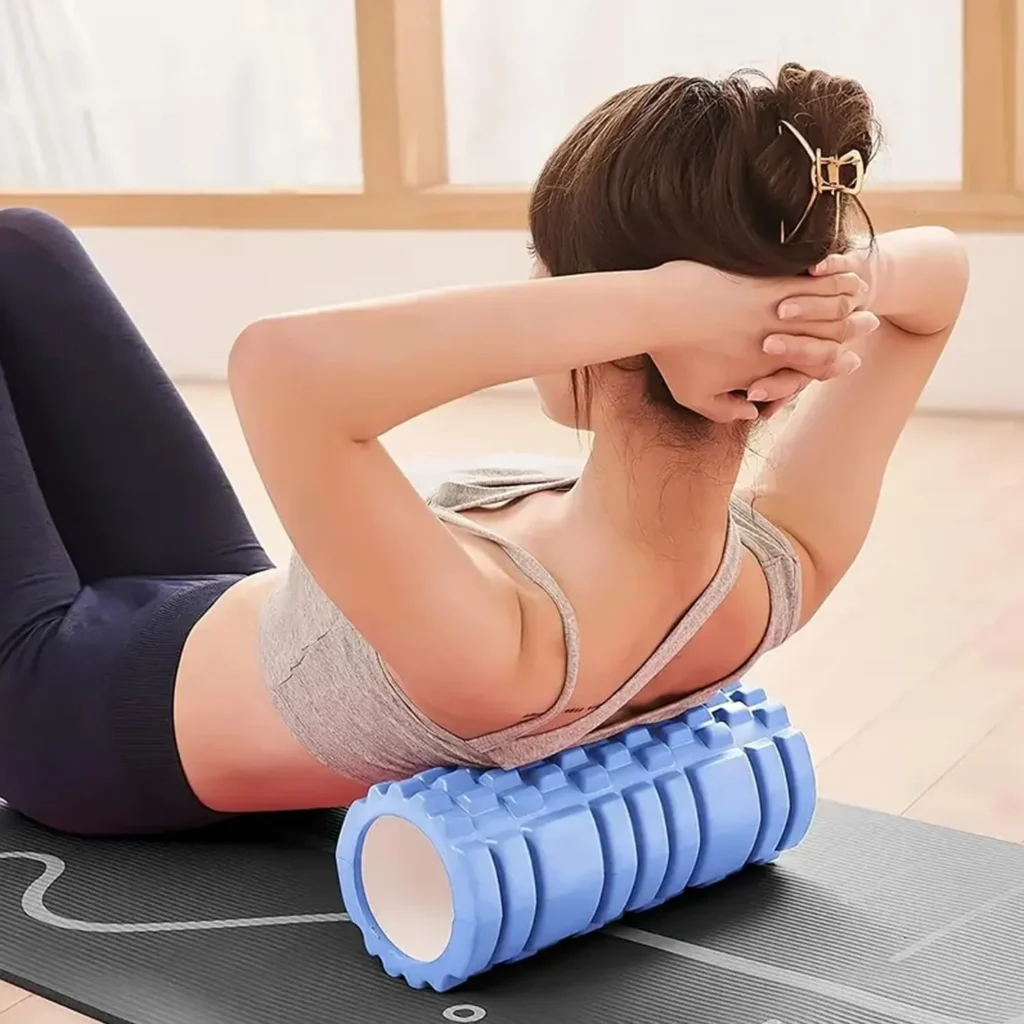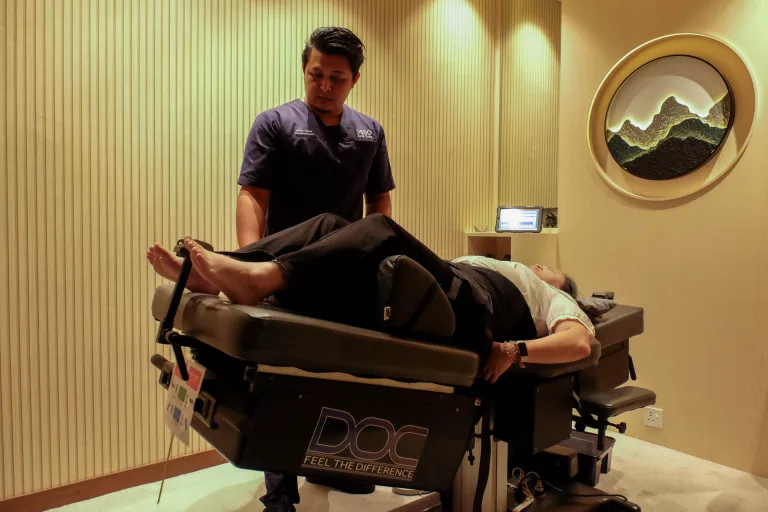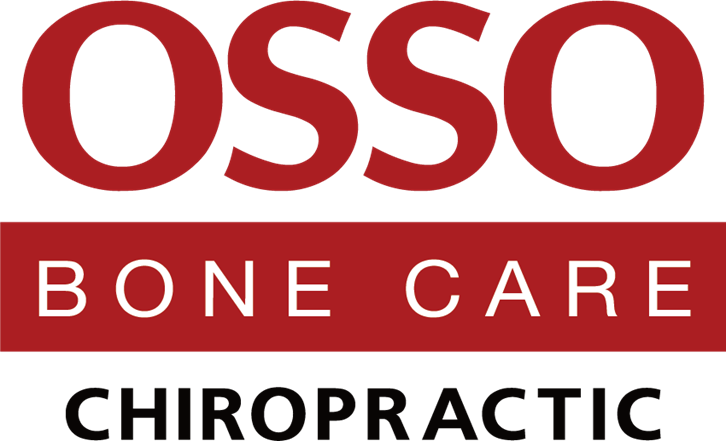The Best Way to Decompress Your Spine and Relieve Pain
Did you know that your spine compresses throughout the day due to gravity and pressure on the intervertebral discs, making you roughly 1% shorter by evening than when you wake up?
Everyday repetitive activities without proper release can slowly but surely build up that pressure in your body. It can show up after long hours at a desk, lifting something heavy, or simply from getting older, your spine takes on a lot every day. That’s when your spinal compression starts causing pain, until you can stretch it out and let it breathe again.
If you’re getting stiffness, aching, or even tingling down your arms or legs, you probably need some spinal decompression. Let’s look into the best ways to decompress your spine, from simple at-home methods to professional treatments offered by chiropractors.
When You Need to Decompress Your Spine
Not every backache calls for spinal decompression, but there are clear signs your spine is asking for help:
- Persistent back or neck pain that doesn’t ease with rest after 1 week..
- Stiffness or reduced flexibility that makes it hard to move freely.
- Tingling, numbness, or shooting pain in your arms or legs.
- A heavy, compressed feeling in your back after sitting or standing for too long.
Conditions That Lead to Spinal Compression
Doctors often identify spinal compression as a major factor in several common back problems:
Herniated or bulging discs. Discs act like cushions between your vertebrae. When one slips or bulges, it presses on nerves and causes pain, tingling, or weakness.
Degenerative disc disease. Discs naturally dry out and shrink with age. This loss of cushioning increases friction between vertebrae and contributes to stiffness and pain.
Sciatica. If compression occurs in the lower spine, the sciatic nerve may become irritated, sending sharp, shooting pain down one or both legs.
Spinal stenosis. As the spinal canal narrows, it squeezes nerves and can lead to chronic pain, numbness, or muscle weakness.
Posture-related strain. Hours of slouching over a laptop or hunching at a desk add subtle but constant pressure on the spine. Over time, this can mimic or worsen the effects of other spinal conditions.
Ignoring these signs can make things worse. For example, a mild herniated disc can sometimes heal on its own with rest and therapy. But left untreated, it may progress to more severe nerve compression. Likewise, poor posture may seem harmless now, but years of spinal misalignment can increase your risk of chronic pain later in life.
Simple At-Home Ways to Decompress Your Spine
For minor pain, you can try out some simple exercises to release pressure on your spine. These are the tips we give our patients after we help them relieve pain from more serious or advanced cases. Doing these regularly can help prevent pressure from building up in the future, thereby having less pain overall.
1. Stretch it out
Stretching remains one of the simplest and most effective strategies. Poses like child’s pose, cat-cow stretches, or gentle spinal twists help lengthen your spine, release tight muscles, and improve flexibility. Even holding a knee-to-chest stretch for 20–30 seconds can ease pressure on the lower back. Aim for just 5–10 minutes of stretching every day to keep your back flexible.
2. Hang off the bed

Lying flat on your back near the edge of your bed and allowing your head and upper body to gently tilt backward over the edge can create a natural decompression effect. This position uses gravity to help elongate the spine. Start slowly, maybe for 20–30 seconds at a time, and build up gradually if it feels comfortable. This technique can be surprisingly effective for people who sit for long hours or experience tension from poor posture.
Take Note: Support your neck with a pillow if needed and stop immediately if you feel dizziness or sharp pain.
3. Try inversion techniques

Inversion techniques allow you to recline at a controlled angle, reversing the effects of gravity on your spine. Simply lying on the floor with your legs resting vertically against a wall creates a mild inversion. This position takes weight off the lower back, improves circulation, and gives your discs a chance to rehydrate.
4. Foam rolling or yoga

Muscle tension often goes hand-in-hand with spinal compression. A foam roller can work like a self-massage tool, helping release tight areas along the back and hips. Rolling gently up and down your spine (without pressing directly on the vertebrae) can ease stiffness and improve blood flow.
Meanwhile, yoga combines stretching, breathing, and mindful movement. Poses like downward dog or bridge pose create subtle traction in the spine, while also strengthening the muscles that support it.
Safety tip: Spinal decompression should never cause sharp or severe pain. If it does, stop and consult a professional.
IMPORTANT NOTE:
Stretching can help decompress your spine, but the right type of stretching depends on your specific spinal condition. It’s always best to consult with a spinal health professional to know your condition and determine which stretches are safe and most effective for your condition.
Professional Spinal Decompression Treatments

Sometimes, simple stretches and home techniques can only go so far. If your back pain lingers, worsens, or starts to interfere with your daily life, it may be time to consider professional care. This is where chiropractic spinal decompression therapy comes in.
Spinal decompression performed by chiropractors typically involves a motorized traction table or a computer-controlled device. You lie comfortably on the table while the machine gently stretches and releases your spine in a controlled rhythm. Unlike a quick manual adjustment, this process is gradual, allowing discs and surrounding tissues time to respond.
The goal is simple:
- Reduce disc pressure. The gentle pulling motion creates negative pressure inside the spinal discs. Think of it like creating a vacuum effect—it helps draw bulging or herniated disc material back into place.
- Improve circulation. With pressure relieved, blood, oxygen, and nutrients can flow more freely to injured tissues. This speeds up the natural disc healing process.
- Relieve nerve compression. By decompressing your spine and giving pinched nerves more space, symptoms like numbness, tingling, or shooting pain can decrease.
A typical session lasts 15 to 20 minutes. Most patients describe the sensation as a gentle stretch or mild pulling. You’ll be fully clothed, strapped in securely, and guided through the process by your chiropractor.
Some find improvement in 1 visit while others start noticing relief after 4–6 sessions, with full treatment plans often running between 12–20 visits, depending on the severity of the condition.
Who Benefits the Most?
Chiropractic decompression can be especially helpful for:
- Herniated or bulging discs
- Degenerative disc disease
- Sciatica or pinched nerves
- Spinal stenosis
- Chronic lower back pain
While generally safe, spinal decompression isn’t for everyone. People with spinal fractures or tumors in the spine may not be good candidates. That’s why an initial consultation with a chiropractor or spine specialist is so important. They’ll review your health history, perform an exam, and sometimes order imaging tests before recommending treatment.
Protecting Your Spine for the Long Term with Spinal Decompression at Osso Bone Care
Your spine does a lot of heavy lifting. By combining good daily habits, simple at-home decompression, and professional treatments when necessary, you can keep it healthy and pain-free for years to come.
But if you’re experiencing painful pressure that doesn’t go away with stretches, our chiropractors at Osso Bone Care are here to help you take that pressure off, safely, effectively, and with treatments tailored to your condition. Whether you’re struggling with a herniated disc, sciatica, or just long-term back tension, spinal decompression could be the solution you’ve been searching for. Book a consultation with Osso Bone Care today!
